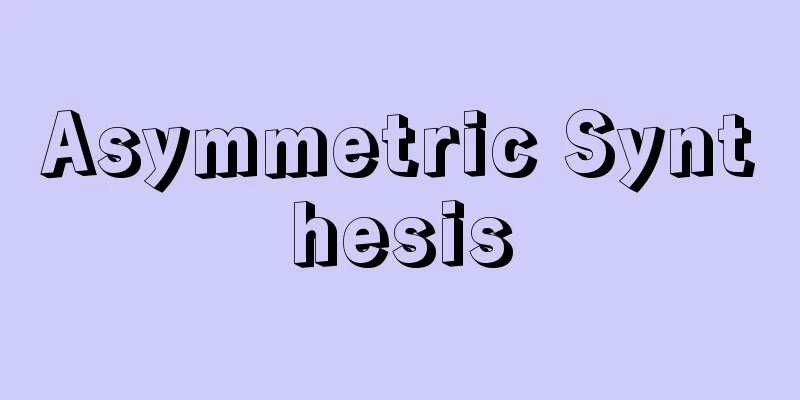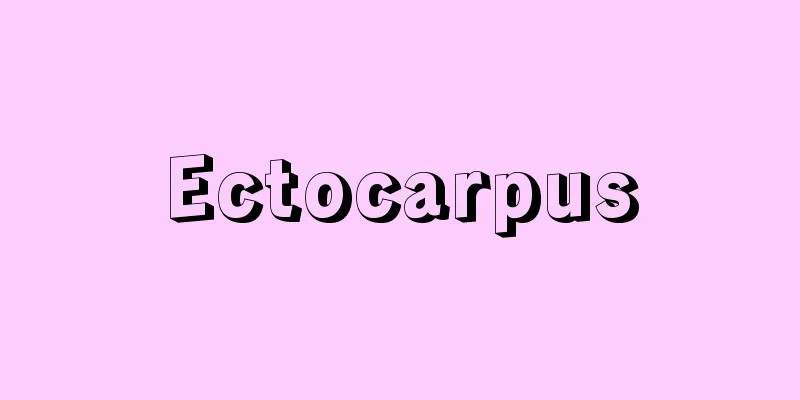Asymmetric Synthesis

|
A reaction that produces more of one of the optically active species in a reaction that creates a new asymmetric center. For example, when the ethyl ester of pyruvic acid CH 3 COCOOH is reacted with the Grignard reagent C 6 H 5 MgBr and the product is hydrolyzed, a compound with one asymmetric carbon atom (C * ) is obtained, CH 3 C * (OH)(C 6 H 5 ) COOH, which is a racemic mixture. However, when the same reaction is performed using the pyruvic acid ester of (-)-borneol, the final product CH 3 C * (OH)(C 6 H 5 ) COOH produces more of the (-)-isomer than the (+)-isomer. The most common asymmetric synthesis, as in this example, involves introducing a new asymmetric center near the chiral center of an optically active species that already has a chiral structure in the molecule. In such cases, the ratio of the two diastereomers produced differs, and so-called asymmetric synthesis is performed. This type of asymmetric synthesis reaction is called a diastereodifferentiation reaction. When D -arabinose is reacted with hydrogen cyanide and then hydrolyzed, two epimeric products, D -mannonic acid and D-gluconic acid, are obtained in a 3:1 ratio. This is also an asymmetric synthesis that utilizes a diastereodifferentiating reaction. Although the compounds directly involved in the reaction do not have chiral structures, asymmetric synthesis can be carried out by the coexistence of an optically active substance with a chiral structure as a type of catalyst or solvent. This is called an enantiodifferentiating reaction. For example, when benzaldehyde and hydrogen cyanide are reacted in the presence of (+)-quinidine, (-)-mandelonitrile is produced in greater quantities than the (+)-isomer. In addition, when an inherently achiral molecule forms a crystal with a chiral space group, optically active substances can be produced by photoreaction in the crystalline state. This case is specifically called absolute asymmetric synthesis. [See alternative term] BINAP Source: Morikita Publishing "Chemical Dictionary (2nd Edition)" Information about the Chemical Dictionary 2nd Edition |
|
新しい不斉中心を生成させる反応において,一方の光学活性体をより多く生成させる反応.たとえば,ピルビン酸CH3COCOOHのエチルエステルにグリニャール試薬C6H5MgBrを作用させ,その生成物を加水分解すると,1個の不斉炭素原子(C*)をもつ化合物CH3C*(OH)(C6H5)COOHが得られるが,これはラセミ体である.しかし,(-)-ボルネオールのピルビン酸エステルを用いて同様の反応を行わせると,最終生成物CH3C*(OH)(C6H5)COOHは(+)-体よりも(-)-体のほうが多く生成する.もっとも普通に行われる不斉合成はこの例のように,分子のなかにすでにキラルな構造が存在する光学活性体について,そのキラル中心の近くに新しい不斉中心を導入するものである.このような場合には,2種類のジアステレオマーの生成比が異なり,いわゆる不斉合成が行われる.このような不斉合成反応をジアステレオ区別反応とよぶ.D-アラビノースにシアン化水素を作用させてから加水分解すると,互いにエピマーの関係にある2種類の生成物D-マンノン酸とD-グルコン酸とが得られるが,両者の生成比は3:1である.これもジアステレオ区別反応を利用する不斉合成である. 反応に直接関与する化合物にはキラルな構造は存在しないが,キラルな構造をもつ光学活性な物質が一種の触媒または溶媒として共存することによって不斉合成が行われる場合もある.これは,エナンチオ区別反応とよばれる.たとえば,ベンズアルデヒドとシアン化水素の反応を(+)-キニジンの存在下に行うと,(-)-マンデロニトリルが(+)-異性体よりも多く生成する.また,本来アキラルな分子がキラルな空間群の結晶を形成する場合,結晶状態での光反応により光学活性体が生成することがある.この場合をとくに絶対不斉合成とよぶ.[別用語参照]BINAP(バイナップ) 出典 森北出版「化学辞典(第2版)」化学辞典 第2版について 情報 |
<<: Government envoy - Fuseishi
Recommend
Stograf Conference - Stograf Conference
A synod of Russian Orthodox bishops held in Moscow...
Telomer
A polymer of olefins (vinyl compounds) with a low ...
Yukimaro Kitagawa
...Yellow cover. Written by Houseidou Kisanji. Il...
Ariwara no Motokata
Years of birth: unknown. A poet of the Heian perio...
Psephurus gladius
...It feeds on small crustaceans and other small ...
Dry reclamation method
…In China, the characters and images engraved on ...
Aioi [town] - Aioi
A former town in Naka District, central Tokushima ...
Poglietti, A.
… [history] The precursors of 19th-century progra...
Wakura [Hot Springs] - Wakura
A hot spring in Nanao City, Ishikawa Prefecture. E...
Nakatsu [city] - Nakatsu
A city in the northern part of Oita Prefecture. It...
Gisoumai (English spelling) yi-cang-mi; i-ts`ang-mi
In China, storehouses that store grain in peacetim...
Euclidean geometry
Geometry developed by Euclid in his work Elements...
Rhodes, Cecil
Born: July 5, 1853, Bishop's Stortford [Died] ...
Kalpa (Kalpa)
...An ancient Indian unit of time. A Chinese tran...
Antyllos
…In addition, the late Edo period ophthalmologist...









![Tagajo [city] - Tagajo](/upload/images/67cc1d2b2f668.webp)